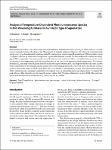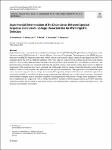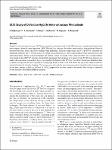Search
Author
- Murawski, K. (2)
- Kopytko, M. (1)
- Kowalewski, A. (1)
- Madejczyk, P. (1)
- next >
Subject
- MOCVD (2)
- DLTS (1)
- growth of HgCdTe (1)
- InAsSb Type-II Superla... (1)
- next >
Date issued
- 2023 (3)
Has File(s)
- true (3)
Search Results
Photoluminescence (PL) is one of the commonly used methods to determine the energy gap (Eg
) of semiconductors. In order to use it correctly, however, the shape of the PL peak must be properly analyzed; otherwise, the value of Eg
is burdened with a large error. Eg
is often mistakenly attributed to the PL peak position, which in type-II superlattices (T2SLs) exhibits typical “S-shaped” behavior as a function of temperature, significantly different from the Varshni model used to define the energy gap of III-V compounds. The position peak of the PL relative to the real Eg
in T2SLs is red-shifted because of the carrier localization at low temperatures and blue-shifted because of the free carrier emission at high temperatures. To correctly determine Eg
, the shape of the PL peak ... |
Experimental results are reported for a medium-wavelength infrared (MWIR) HgCdTe photodetector designed in a joint laboratory run by VIGO Photonics S.A. and the Military University of Technology. The parameters of the MWIR detectors fabricated with HgCdTe heterostructures were studied. Advances in the metal–organic chemical vapor deposition (MOCVD) technique enable the growth of HgCdTe epilayers with a wide range of composition and doping, used for uncooled infrared detectors. Device-quality HgCdTe heterostructures were deposited on 2-inch-diameter, low-cost (100) GaAs substrates. The heterostructures obtained were examined measuring the spectral response and current–voltage characteristics in different temperatures. |
Deep-level transient spectroscopy (DLTS) measurements were performed on HgCdTe heterostructure photodiode grown by metal-organic chemical vapor deposition (MOCVD) on GaAs substrate. In order to extract defects from individual layers of the heterostructure, three consecutive etchings were performed. In the first experiment, the N+/T/p/T/P+/n+ structure was chemically etched to the N+ bottom contact to obtain a mesa-type detector. Six localized defects were extracted across the entire photodiode. In the second experiment, the bottom contact was made to the p-type absorber. Two localized defects were found in the p/T/P+/n+ structure. |



